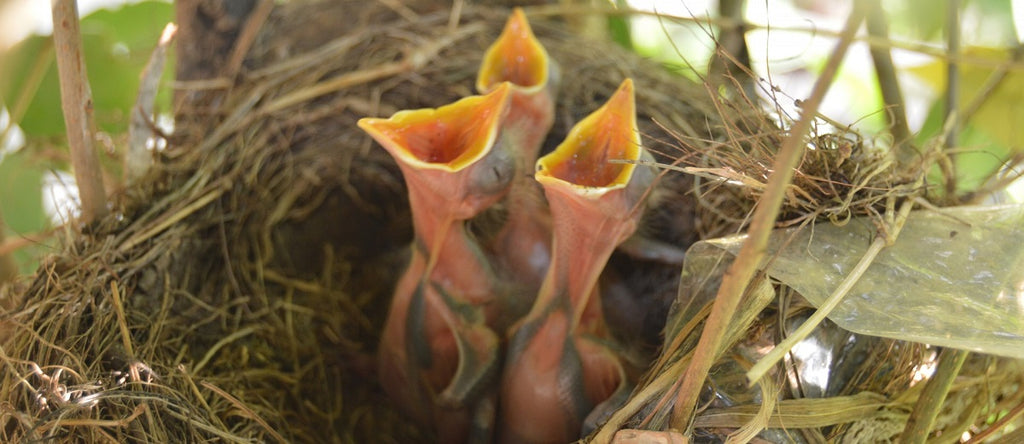Bird migration is the seasonal movement between breeding and wintering grounds. Tons of bird species do it, varying in distance traveled and size of flock. But it’s no picnic for our feathery friends. Natural predators, loss of habitat and hunting has led to high mortality rates. Which is why in 1918, the Migratory Bird Treaty Act was passed. In this post, we’ll provide an overview of the act and which birds are protected by the migratory bird act. We’ll also cover what the act could mean for you if you’re trying to rid birds from your property.
What Is The Migratory Bird Treaty Act?
The Migratory Bird Treaty Act states, “No person may take (kill) possess, import, export, transport, sell, purchase, barter, or offer for sale, any migratory bird, or the parts, nests, or eggs of such bird except as may be permitted.” Under the act it is illegal to destroy a nest that has eggs or chicks in it or if there are young birds that are still dependent on the nest for survival.
Bird lovers can thank a lawyer, Louis Marshall, for the enactment. In a landmark Supreme Court case Missouri v. Holland 252 U.S. 416 (1920), Marshall argued that it was the federal government’s right and responsibility to protect and conserve our environment. He proclaimed that migratory birds are natural guardians against certain insects, which, if not held in check, would eventually lead to the destruction of both prairie and forest lands. As a result, migratory birds have been protected ever since.
What Birds Are Protected By The Migratory Bird Act?
There are over 1,000 species currently on the list of birds protected by the Migratory Bird Act. Some common bird species are the albatross, blackbird, bluebird, bunting, cardinal, chickadee, condor, crane, crow, cuckoo, dove, bald eagle, egret, falcon, finch, goose, hawk, lark, loon, mockingbird, nightingale, owl, pelican, pigeon, raven, warbler, woodpecker… and about 970 more!
See the full list of protected birds at the US Fish & Wildlife Service.

What Species Are Not Protected?
There are a few birds not protected by the Migratory Bird Act. These are primarily species of non-native birds, such as the House Sparrow and the European Starling. Many shorebirds, though native, are subject to limited protection and can be hunted in the proper season.
See the full list of birds that are not protected by the act at the Federal Register.
Migratory Bird Treaty Act Violations
The Migratory Bird Treaty Act has been amended and changed several times throughout its 100-year history. In the early days, the main focus was on hunters and people directly assaulting birds. But by the 1970s, the Fish and Wildlife Service started punishing industries that needlessly (though unintentionally) killed birds. That part of the law stayed into affect until just this past year.
Now, industries can no longer be prosecuted for accidentally killing non-game migratory birds. Conservationists are outraged, considering the millions of birds that die each year due to power lines, wind turbines, oil waste pits, and more. Now, only the intentional killing of birds, like through hunting and trapping, can be prosecuted.

For various industries, the court of public opinion may still have a great impact on activities that “accidentally” harm bird species protected under the act. As many communication tower companies know, there are groups constantly monitoring active nests.
Violators of the act are considered guilty of a misdemeanor, and in some cases felony offenders. Fines and jail time of between six months and two years can be the result.
Best Practices For Bird Problems
With recent caveats to the law, it is still illegal to intentionally harm protected species of birds. It is also important to note that the removal of protected birds’ nests is still seen as a violation of the act. You may have a pest bird problem at your place of business or home, but that does not give you the right to harm the birds or to damage their nests. Deterring nuisance birds before they roost and nest is often the best solution. The Whirlybird Repeller can be the solution.
Get The WhirlyBird Repeller
Where nuisance migratory birds are especially a problem (i.e. communication towers, power grids, etc.), the WhirlyBird Repeller offers the most humane and effective deterrent on the market. The WhirlyBird combines multiple bird scaring tactics into a single device that does not harm the birds:
- Movement – The device spins, wobbles and vibrates in the wind
- Light – Its holographic pole reflects and scatters sunlight
- Scare – The WhirlyBird mimics the sound of beating wings, and it’s shaped like a Peregrine Falcon, the predator of many different bird species
All these tactics are designed to occur in a randomized pattern that disorients birds and prevents them from becoming accustomed to the device. Combined, they make the WhirlyBird Repeller an extremely effective and safe bird deterrent. Because it does not harm the birds or their environment, it can be used to safely deter them from problematic areas, like communication towers and power grids, while complying with the Migratory Bird Treaty Act.
Give it a Whirl. Order today!


